 Asset Publisher
Asset Publisher
Polish forests
Poland is in the European lead, while concerning the area of all forests. They cover about 29,2 % of the country territory, and grow within the area of 9,1 million hectares. The overwhelming majority of the forests is state owned, of which almost 7,6 million hectares are managed by the State Forests National Forest Holding..
The number of Polish forest is still growing. The forestation rate of the country has increased from 21 % in 1945 to 29,2 % at the moment. Between 1995 and 2008, the forest area increased by 310 thousand ha. The basis for afforestation works is the "National Programme for Increasing the Forest Cover" (KPZL), assuming an increase of the forestation rate up to 30 % by 2020 and up to 33 % by 2050. Polish forests abound in flora, fauna and fungi. 65 % of the total number of animal species live there.
The forests grow in our country on poor soils, mainly because of the development of the agriculture in previous years. It influences the distribution of the types of the forest sites in Poland. Over 55 % of the forest areas is covered with coniferous forests. In other areas, there are forest sites, mainly the mixed ones. Their small part constitute alder and riparian forests – not more than 3 %.
In the years 1945 – 2011 the area of natural deciduous tree stands within the area of the State Forests National Forest Holding increased from 13 to 28,2 %.
Within the lowlands and uplands the most often occurring tee species is pine. It covers 64,3 % of the forest area of the State Forests National Forest Holding and 57,7 % of private and commune forests. In the mountains the predominant species is European spruce ( in the west) and European spruce with beech (in the east). Domination of pine is the result of carrying on sustainable forest management in the past. Once, the monocultures (crops or cultivations of one species) were the answer to the great demand of industry for wood. Such forests appeared to be quite fragile to climatic factors. They also were often the prey of pests' expansion.
In Polish forests, the share of other tree species, especially deciduous trees have been systematically increasing. The foresters have stepped aside from monocultures – that is why, they try to fit specific species of the forest stand to the natural stand, that would be proper for the given area. Thanks to that, in the years 1945 – 2011, the area of the deciduous tree stands within the lands of the State Forests National Forest Holding increased from 13 to 28,2 %. There occur more and more frequently the following tree species: oaks, ashes, maples, sycamore maples, elms, but also birches, beeches, alders, poplars, hornbeams, aspens, tilias and willows.
Our forests are the most often represented by the forest stands aged 40 to 80 years. The average age of the forest equals 60 years. More and more trees are of big size at the age over 80 years. Since the end of the Second World War, the forests' area has increased up to almost 1,85 million hectares.
Raport o stanie lasów w Polsce 2012
 Asset Publisher
Asset Publisher
 Asset Publisher
Asset Publisher
HUNTING
HUNTING
The areas of the Forest District Świebodzin, concerning hunting, belong to II Hunting Region. Within this area in 8 hunting districts, there manages 5 hunting associations and the Pedigree Breeding Establishment (OHZ). The hunting district 104 operates in the area of 9560 ha, including 5510 ha of the forests, while the hunting district 114 operates in the total area of 7280 ha, including 4345 ha of the forests.
The state of the hunting game within the area of the Forest District Świebodzin during the hunting period 2013/2014 presented as follows:
- 678h head of stags including 262 head of harts,
- 1941 head of deer including 696 head of cuckold,
- 1014 head of wild boars,
- 144 head of fallow deer including 57 head of harts.
Within the area of the Pedigree Breeding Establishment (OHZ) in the hunting district 114, there is a cold storage to keep hunted game, which is used by two hunting districts.
The Forest District Świebodzin, undertaking actions to the benefit of adverse tendencies in the quantity of European hares and grey partridges, in 2004, established the net – cage farms of hares within the area of the Pedigree Breeding Establishment (OHZ) of the State Forests. In 2005, there started the aviary breeding of grey partridges. The aim of the animal breeding is to breed appropriate number of European hares and grey partridges accustomed to live in natural conditions and to restore their species through their re – introduction in the areas of the proper site conditions for the above mentioned species.
In 2015, in the Forest District Świebodzin, there reopened the Closed Fallow Deer Breeding Farm. The aim of this undertaking is re - introduction and strengthening the gene pool of this species within the whole west belt of the country controlled by the State Forests.


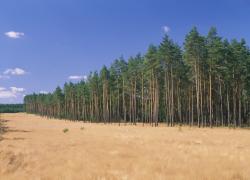 fot. Paweł Fabijański
fot. Paweł Fabijański
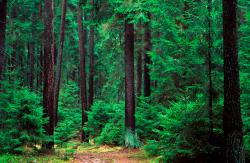 fot. Paweł Fabijański
fot. Paweł Fabijański
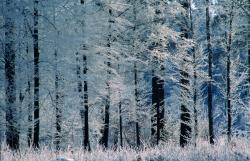 fot. Paweł Fabijański
fot. Paweł Fabijański





 Lis.jpg
Lis.jpg
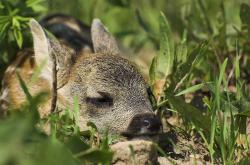 Sarenka.jpg
Sarenka.jpg
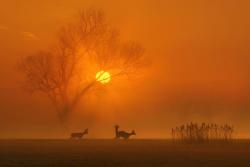 Łowiectwo, fot. Jerzy Malicki
Łowiectwo, fot. Jerzy Malicki



